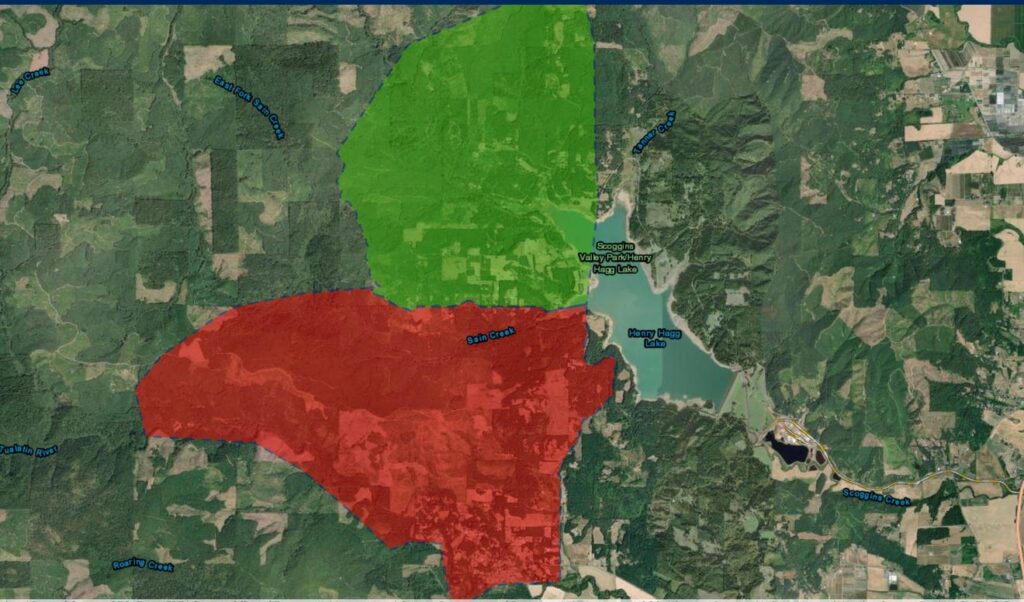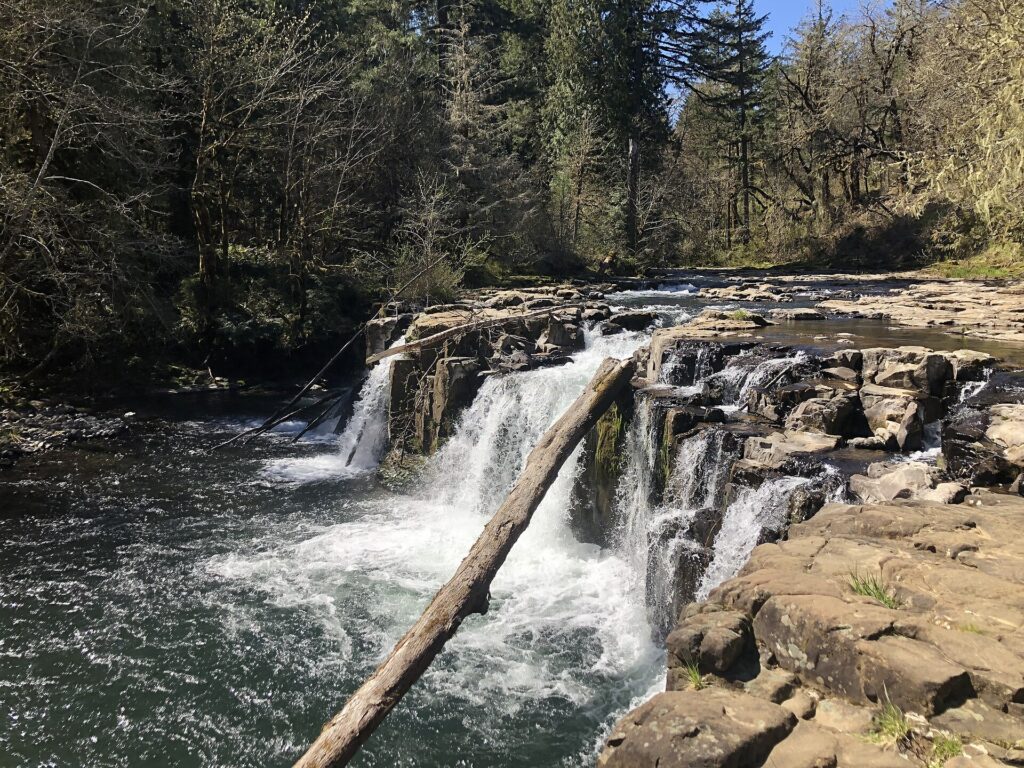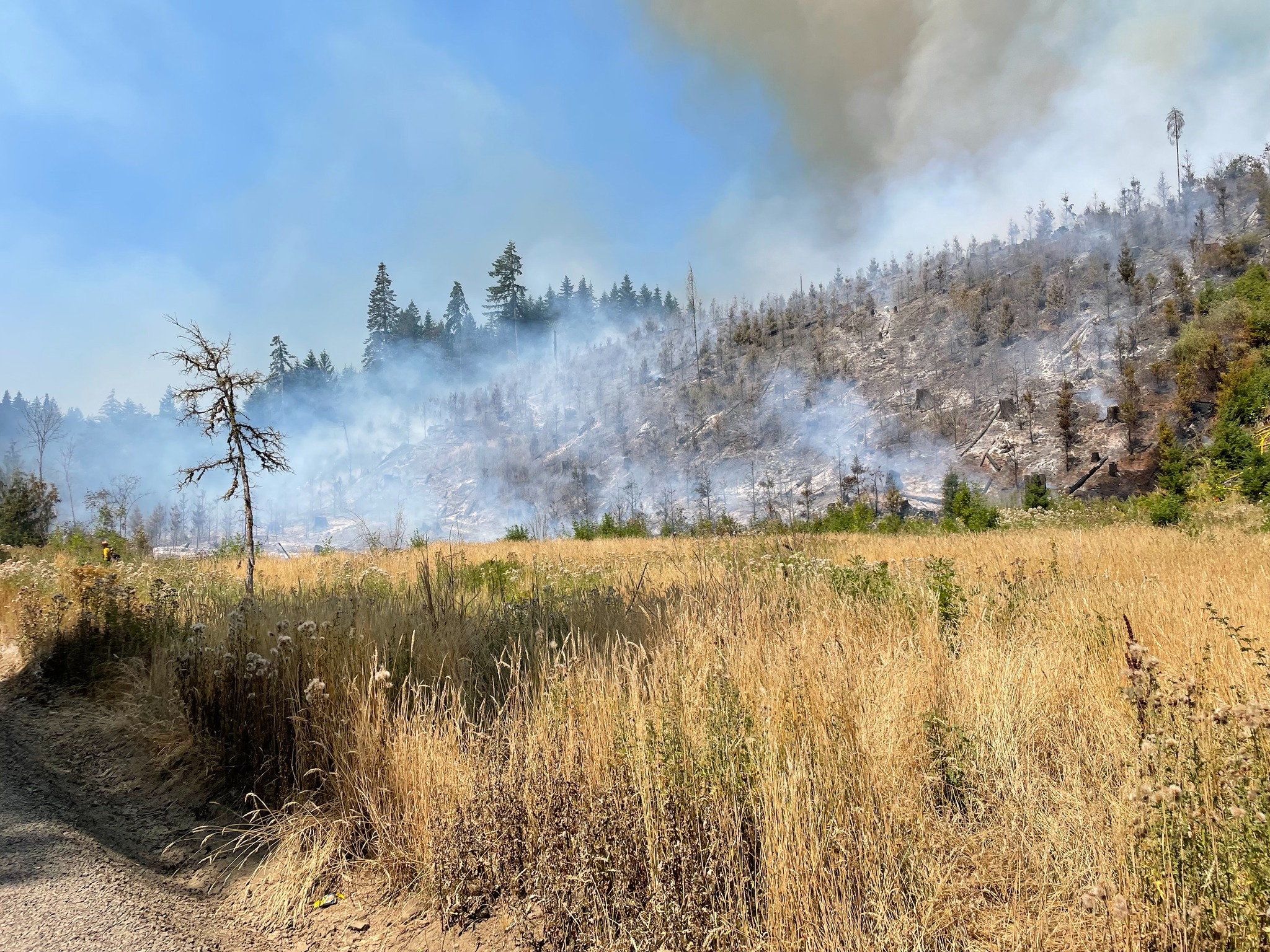A wildfire erupted near Henry Hagg Lake on Thursday afternoon, triggering an immediate level 3 "go now" evacuation for the community of Cherry Grove. As an Oregonian who has witnessed these destructive fires year after year, it’s hard not to feel a growing frustration. What used to be a season of enjoying the outdoors has transformed into a time of smoky skies and constant anxiety until autumn brings some relief. We are watching in real time, in yet another dreadful summer, as our most pristine and favorite gorgeous places to explore go up in flames.
This particular fire, known as the Lee Falls Fire, has quickly grown to around 200 acres. By the time sheriff's deputies were knocking on doors to get people out of harm's way, it had already threatened several homes. The evacuation orders weren’t limited to Cherry Grove alone; residents along Southwest Oak Street and Southwest Nixon Drive in Gaston, north of Yamhill and west of Forest Grove, were also told to leave immediately.
In 2020, the Powerline Fire led to Level 3 evacuation orders for the Cherry Grove community and areas along Southwest Patton Valley Road, extending to Cherry Grove, Southwest Lee Road, and Southwest Cascara Road near Henry Hagg Lake. Now, nearly four years later, history repeats itself with new evacuation orders for Cherry Grove, including regions west of Lee Road and south of Southwest Sain Creek Road.
We're keeping tabs on the Lee Falls brush fire 🔥 near Hagg Lake in Washington County. An uptick in winds might bring tough conditions for firefighters this afternoon. Fire smoke will shift south into Yamhill County, causing unhealthy air quality at times. ⚠️ #orwx @NatashaKOIN6 pic.twitter.com/9fY48bCdwj
— Kelley Bayern (@KelleyKOIN) August 9, 2024
New Life Christian Fellowship Church in Gaston has stepped up, offering shelter to those displaced by the fire. With the help of the American Red Cross, the church is working hard to provide a safe space for those affected.
But how did this fire start, and why does it seem like every summer is just another battle against the flames? The Lee Falls Fire was first reported late Thursday morning on Lee Falls Drive, spreading quickly through dry grass and brush—a scenario that’s become all too familiar. Within hours, it had moved into tree stands and was racing north and northwest. By mid-afternoon, it had already consumed 100 acres, still north of the Tualatin River.
I have what I believe are the last pictures of Lee falls before the fire burnt the surrounding area to a crisp. I took the photos on Tuesday and can provide time stamps if needed pic.twitter.com/eLG1GskqRQ
— Mr Caspor (@BlueBloodShade) August 9, 2024
Despite the swift response from local firefighting resources and air support from the Oregon Department of Forestry, the situation took a turn for the worse when the winds shifted. Suddenly, the fire wasn’t just a northward threat; it began pushing south and southeast, sparking spot fires and crossing the Tualatin River. The fire grew rapidly, and soon homes and the entire town of Cherry Grove were in its path. Task forces from Yamhill, Clackamas, and Multnomah counties joined the fight to protect as much as they could.

As evening approached, the focus shifted to saving homes directly in the fire’s path. By nightfall, the fire had doubled in size to 200 acres with 0% containment. Overnight, 150 firefighters, along with 60 engines, tenders, and brush units, worked tirelessly to protect properties and establish fire lines.
Lee Falls, located on the Tualatin River in Washington County, Oregon, is named after James A. Lee, a 19th-century sawmill owner. Situated along Southwest Lee Falls Road on private timberland, the waterfall cascades over a basalt rock formation. Unlike many others in the region, Lee Falls is notable for being wider than it is tall. Beneath the falls lies a popular swimming hole, while downstream you'll find Little Lee Falls and the unincorporated community of Cherry Grove. Upstream, Ki-a-Kuts Falls continues the river's scenic journey.

As someone who calls Oregon home, it’s heartbreaking to see our summers reduced to this cycle of destruction and fear. The charm of the season has faded, replaced by an annual dread as we wait for the next fire to disrupt our lives. It’s a stark reminder that the beauty of this state is fragile, and as the climate continues to change, so too does the reality of living here. We can only hope for a time when our summers are once again defined by clear skies and outdoor adventures, not by the fight to protect our homes from the relentless spread of wildfires.













